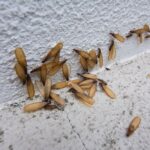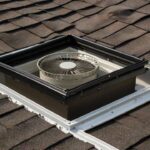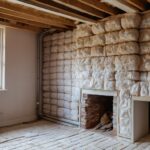Building an outdoor living space, whether it’s a beautiful pergola, spacious deck, or shaded verandah, is exciting. These structures transform backyards into places where families gather, kids play, and memories take shape. But once they’re built, keeping them in great condition requires regular care and attention.
Just like any part of your property, outdoor structures need ongoing maintenance to stay safe, functional, and looking their best for years to come. Let’s walk through practical steps homeowners can take to protect these valuable investments.
Understanding Why Maintenance Matters
Outdoor structures face harsh Australian conditions daily. Scorching summer heat, torrential rain, strong winds, and even occasional hail all take their toll on timber, metal, and other building materials. Without proper care, small issues can quickly become expensive repairs.
Regular maintenance helps you:
- Spot problems early before they worsen
- Extend the lifespan of your outdoor structures
- Maintain your property value
- Keep your family safe from structural hazards
- Avoid costly emergency repairs
Think of maintenance as protection for one of your home’s biggest investments.
Seasonal Inspection Checklist
Conducting seasonal inspections helps catch issues before they escalate. Walk around your outdoor structures at least four times yearly, checking for these common concerns:
Spring Inspection After winter’s harsh weather, check for:
- Rotting or damaged timber from moisture exposure
- Loose or missing fasteners
- Cracks in structural beams
- Peeling paint or stain
- Water damage signs
Summer Check Before peak outdoor season arrives:
- Test deck boards for stability
- Look for sun damage or fading
- Inspect roofing materials for warping
- Check shaded areas for mould growth
- Ensure drainage systems work properly
Autumn Review Preparing for wetter months ahead:
- Clear gutters and drainage points
- Remove debris from roof surfaces
- Check for leaf buildup in corners
- Trim nearby branches that could cause damage
- Inspect for insect activity or nests
Winter Assessment During quieter months:
- Look for water pooling or drainage issues
- Check structural integrity after storms
- Assess waterproofing needs
- Plan repairs for spring implementation
Timber Care Essentials
Timber structures bring warmth and natural beauty to outdoor spaces, but wood requires consistent attention to maintain its integrity.
Cleaning Techniques
Start with basic cleaning twice yearly. Use gentle methods to avoid damaging wood fibres:
- Sweep away dirt, leaves, and debris regularly
- Wash with mild soap and water using soft brushes
- Rinse thoroughly with a garden hose
- Allow complete drying before applying treatments
- Never use high-pressure washers that can splinter timber
Sealing and Staining
Protection from moisture is crucial for timber longevity:
- Apply quality wood sealer every 2-3 years
- Choose stains appropriate for your climate
- Sand lightly before reapplication
- Follow the manufacturer’s instructions carefully
- Schedule treatments during dry weather periods
Fresh sealing prevents water penetration that causes rot, warping, and structural weakness.
Metal Component Maintenance
Many outdoor structures incorporate metal elements, posts, brackets, roofing, or decorative features. These components need different care than timber.
Rust Prevention
Metal exposed to moisture will eventually rust without protection:
- Inspect regularly for rust spots or discoloration
- Sand away surface rust immediately
- Apply rust-inhibiting primer
- Paint with quality exterior metal paint
- Check fasteners and replace corroded hardware
Cleaning Metal Surfaces
Keep metal components clean and protected:
- Wipe down with a damp cloth monthly
- Use mild detergent for tougher grime
- Rinse completely after cleaning
- Dry thoroughly to prevent water spots
- Apply protective wax annually for extra defense
Roofing and Cover Care
Overhead protection is essential for functional outdoor spaces. Whether you have solid roofing, shade cloth, or open slats, regular maintenance keeps structures weatherproof.
Roof Inspections
Check roofing materials regularly:
- Look for loose, cracked, or missing panels
- Clear debris that traps moisture
- Inspect seals around fasteners
- Check for rust on metal roofing
- Ensure proper water runoff
Gutter Maintenance
Proper drainage protects everything below:
- Clean gutters quarterly
- Remove leaf litter and debris
- Check downpipes flow freely
- Repair leaks immediately
- Consider gutter guards to reduce maintenance
Blocked gutters cause water overflow that damages timber framing, creates rot, and can even affect your home’s foundation.
Deck Safety Considerations
Decks see heavy foot traffic and must remain structurally sound for safety. Regular checks prevent accidents and injuries.
Stability Testing
Test deck integrity regularly:
- Walk across the entire surface, checking for soft spots
- Listen for unusual creaking or movement
- Push on railings to test stability
- Inspect connections between boards and joists
- Look underneath for signs of damage or deterioration
Splinter Prevention
Rough surfaces create hazards, especially for barefoot family members:
- Sand rough patches immediately
- Check for protruding nails or screws
- Fill cracks with appropriate wood filler
- Maintain smooth surfaces with regular sanding
- Apply protective finishes to reduce splintering
For comprehensive guidance on protecting outdoor spaces and valuable assets, you can find more information on home insurance covers with NRMA Insurance.
Weather Preparation Strategies
Australian weather can be unpredictable and severe. Preparing outdoor structures for extreme conditions prevents damage and extends their useful life.
Storm Readiness
Before storm season arrives:
- Secure loose items that could become projectiles
- Trim overhanging branches near structures
- Check roof fasteners are tight
- Clear drainage paths completely
- Move furniture to protected areas
Heat Protection
Intense summer heat affects materials differently:
- Apply UV-protective finishes to timber
- Choose heat-resistant materials for future repairs
- Ensure adequate ventilation in covered areas
- Water nearby gardens to maintain ground moisture
- Consider shade additions to protect surfaces
Pest Management
Insects and other pests can cause significant damage to outdoor structures if left unchecked.
Common Culprits
Watch for signs of:
- Termites in timber structures
- Carpenter ants are creating nests
- Wasps are building under the eaves
- Possums damaging roofing
- Birds nesting in gutters
Prevention Methods
Protect structures from pest damage:
- Apply termite treatment to timber
- Seal gaps and cracks where pests enter
- Remove food sources near structures
- Keep the area clear of wood piles
- Schedule professional pest inspections annually
Early detection saves thousands in repair costs.
Foundation and Footing Care
Strong foundations support everything above them. Ground-level components often get overlooked but need regular attention.
Checking Structural Posts
Inspect posts and footings carefully:
- Look for concrete cracks or crumbling
- Check for wood rot at ground contact points
- Ensure posts remain plumb and vertical
- Test stability by gently pushing
- Look for settling or sinking
Drainage Around Footings
Water pooling around foundations causes serious problems:
- Grade soil away from posts
- Install proper drainage if needed
- Keep gutters flowing away from footings
- Remove plants growing too close
- Address erosion issues promptly
For expert advice on building and maintaining quality outdoor structures, visit the pergola building permit page for professional guidance.
Documentation and Records
Keeping maintenance records helps track your structure’s condition over time and proves valuable if issues arise.
What to Track
Document these details:
- Date and type of maintenance performed
- Products used (brands, colours, specifications)
- Repairs completed and materials replaced
- Professional services hired
- Costs associated with maintenance
- Photos showing the before and after conditions
Storage Tips
Organise information effectively:
- Create a dedicated folder for outdoor structures
- Take photos during each inspection
- Save receipts for all products and services
- Note weather events that affect structures
- Keep contractor contact information handy
Good records help with insurance claims and prove maintenance history if selling your property.
When to Call Professionals
While many maintenance tasks are manageable for homeowners, some situations require professional expertise.
Signs You Need Help
Contact professionals when you notice:
- Structural movement or sagging
- Extensive rot or termite damage
- Electrical issues with outdoor lighting
- Major cracks in concrete or masonry
- Water damage affecting multiple areas
- Unsafe conditions requiring immediate attention
Choosing Service Providers
Select qualified professionals carefully:
- Check licensing and insurance coverage
- Read reviews and ask for references
- Get multiple quotes for major work
- Verify experience with similar structures
- Confirm warranty on completed work
Professional maintenance may cost more upfront, but it prevents expensive problems down the track.
Creating Your Maintenance Schedule
Consistency is key for effective maintenance.
Create a simple schedule that fits your lifestyle and stick to it.
Monthly Tasks
Quick checks requiring minimal time:
- Visual inspection during outdoor time
- Clear debris from surfaces
- Wipe down metal components
- Check for new damage after storms
- Note issues for seasonal attention
Quarterly Tasks
More thorough seasonal reviews:
- Deep cleaning of all surfaces
- Detailed inspection of structural elements
- Gutter and drainage maintenance
- Application of protective products
- Professional services as needed
Annual Tasks
Comprehensive yearly maintenance:
- Complete resealing or re-staining
- Professional structural inspection
- Pest treatment application
- Major repairs and replacements
- Documentation review and photo updates
Set reminders on your phone or calendar to ensure nothing gets missed.
Budget Planning for Maintenance
Setting aside funds for ongoing maintenance prevents financial stress when issues arise. Allocate between 1% and 3% of your structure’s value annually for care and repairs. Budget separately for routine maintenance and emergency repairs.
For information on outdoor structure maintenance and planning, explore verandah ideas for design inspiration that incorporate low-maintenance features.
Protection Through Proper Coverage
Beyond physical maintenance, ensuring appropriate insurance coverage protects your financial investment in outdoor structures. Many homeowners are unaware that their standard policies may not fully cover expensive outdoor additions, such as pergolas, decks, and verandahs.
Review your policy regularly to confirm:
- Outdoor structures are listed specifically
- Coverage amounts match current replacement costs
- Storm and weather damage are included
- Accidental damage options are considered
- Liability coverage extends to outdoor areas
Proper coverage provides peace of mind knowing your investment is protected if the unexpected happens.
Final Thoughts
Maintaining outdoor structures doesn’t need to feel overwhelming. Breaking tasks into manageable chunks and creating simple routines makes care easier and more effective.
Regular attention to these valuable additions keeps them beautiful, safe, and functional for decades.
Take pride in your outdoor space, they deserve the same attention and care you give the rest of your home.





